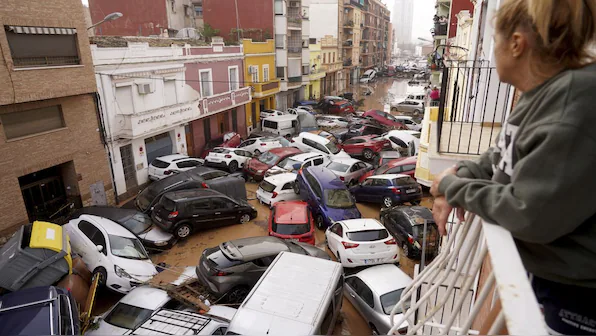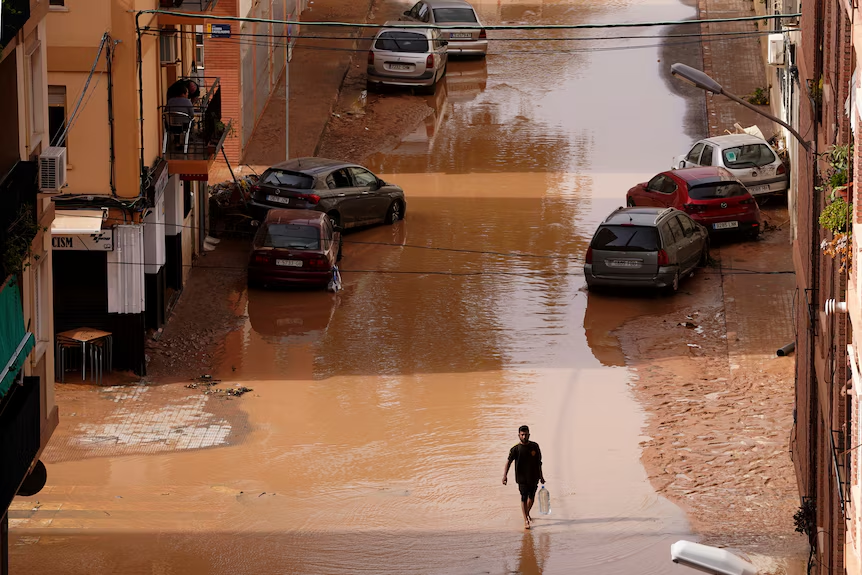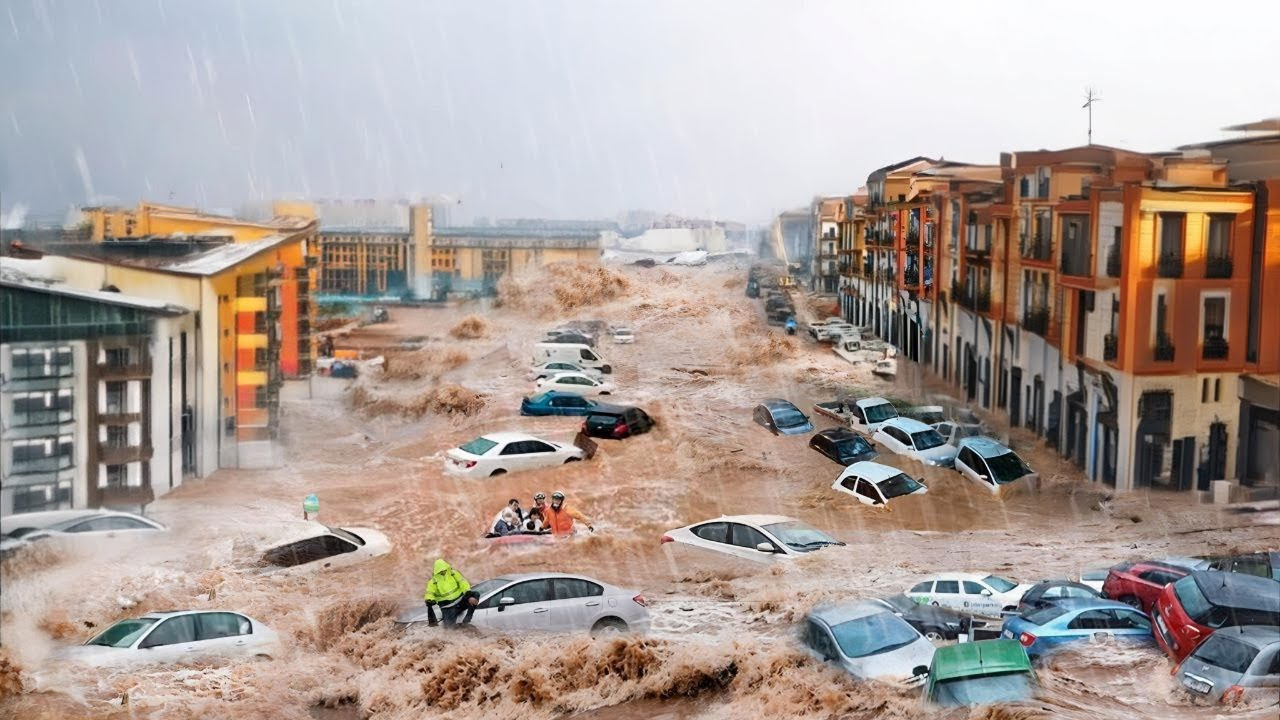Spain’s recent floods, caused by a phenomenon known as DANA, have become the deadliest natural disaster in the country in over 50 years. These floods, which began on October 28 and reached their peak on October 29, have devastated southern and eastern regions, particularly affecting the cities of Valencia, Murcia, and Malaga.
With heavy rains, rapidly rising waters, and extensive damage, the Spanish people have faced an unprecedented weather event that left 95 people dead and many areas in ruin.
Understanding DANA: The Science Behind the Torrential Rains
DANA, short for depresión aislada en niveles altos, translates to “isolated depression at high altitudes.” Known colloquially as the “cold drop,” DANA is a weather phenomenon that has been observed throughout Spain’s history, though rarely with such devastating consequences.
DANA occurs when cold air from higher altitudes descends over the warmer waters of the Mediterranean Sea, causing an intense atmospheric disturbance. This encounter between cold and warm air creates instability, leading to the formation of dense cumulonimbus clouds that often produce torrential rain, hail, and, at times, tornadoes.
The phenomenon of cold air mixing with warmer Mediterranean waters has been studied since the late 19th century when German scientists coined the term kaltlufttropfen (or cold air drop) to describe it.
Read : Zahara de la Sierra: Spain’s White Village
For Spain, this interplay is heightened by its geographical position between the Atlantic Ocean and the Mediterranean Sea, an area where mountainous terrain further contributes to storm formation. As a result, the country’s eastern and southern regions experience some of Europe’s most intense and erratic storms during these weather events.
Meteorologists, such as Ruben del Campo from Spain’s weather agency Aemet, noted that this DANA episode ranks among the three most intense storms to hit the Valencia region in the last 100 years.
Del Campo explained that certain areas experienced rainfall exceeding 300 liters per square meter, particularly between Utiel and Chiva, where storm systems continued to form and regenerate, intensifying the overall impact.
The Devastation: Lives Lost and Communities in Ruin
While Spanish officials prepared for possible flooding due to DANA, the intensity of the storm outpaced forecasts. Within hours, areas such as Andalusia experienced four times the average monthly rainfall for October.
As water levels rose and floodwaters surged, entire towns were swept under torrents of muddy water, trapping residents, damaging infrastructure, and sweeping away vehicles. Roads and bridges across affected regions, particularly in Valencia, were rendered impassable, complicating rescue operations and isolating several communities.
The scope of the damage is vast. With at least 95 confirmed deaths, the death toll is expected to rise as search and rescue operations continue. Buildings and homes have been destroyed, power outages have left approximately 155,000 customers in the dark, and extensive property damage has affected both urban and rural areas.
Videos and photographs emerging from affected cities show bridges washed away and streets transformed into rivers. The fast-moving floodwaters left many with no time to react. Residents recounted harrowing stories of survival.
Guillermo Serrano Pérez, a resident from Paiporta near Valencia, described the experience as being hit by a “tsunami.” Town councilor Esther Gomez also shared her shock, explaining how quickly the situation changed from calm to catastrophic.

In response to the tragedy, Spanish Prime Minister Pedro Sánchez declared three days of national mourning, expressing solidarity with the victims and their families. King Felipe VI of Spain also offered condolences, pledging support to those affected and acknowledging the tireless efforts of emergency services.
Despite the continued rainfall and hazardous conditions, emergency responders have been working around the clock to reach trapped residents, restore utilities, and assess the damage. However, their work is far from over, as the destruction caused by DANA has left many areas still vulnerable to future flooding.
Why DANA’s Impact Has Become More Severe
While DANA events have been recorded in Spain’s history, the increasing severity of such phenomena raises questions about climate change and human impact on the environment. The Mediterranean region has seen rising temperatures, warmer sea surfaces, and shifting weather patterns, all factors that exacerbate the effects of DANA storms.
Warmer seas lead to higher levels of evaporation, which in turn results in more humid air that fuels extreme rainfall events. In areas where infrastructure is not designed to withstand such sudden and intense flooding, the impact is amplified, as seen in the recent floods.
The consequences of climate change are becoming evident globally, and Spain’s flood tragedy reflects this growing trend of climate-induced natural disasters. Experts have noted that extreme weather events are occurring with greater frequency and intensity worldwide, and in Spain, warmer Mediterranean waters mean that DANA storms may continue to become more common and severe.

The country’s position at the juncture of different weather systems further heightens its vulnerability to such extreme conditions. As cities expand and urbanize, concrete and asphalt further limit the natural absorption of rainwater, leading to more severe flooding.
Meteorologists are urging authorities to adopt more resilient urban planning and infrastructure solutions to mitigate the effects of future storms. This includes improving drainage systems, reinforcing vulnerable structures, and implementing early warning systems to help residents evacuate and seek safety.
In the wake of these recent floods, there is a growing call for comprehensive climate adaptation measures to reduce the risks posed by phenomena like DANA. As Spain mourns its losses, attention now shifts to the future and the steps needed to protect communities from the next extreme weather event.

